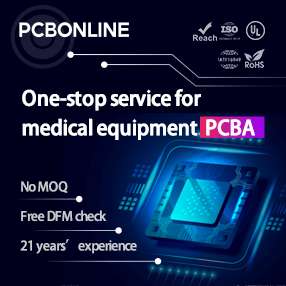Manufacturing printed circuit boards can be time-consuming unless you are a turn-key manufacturer. There is a way to speed up the process by using automated surface-mount technology (SMT). This type of technology automates the process of applying components and using through-hole technology to create PCBs.

How SMT Speeds Up Manufacturing PCBs
SMT processing is the most commonly used technology in the PCB industry. Manufacturers prefer it over through-hole technology because the components go directly on the board. With SMT, soldering happens automatically, and no wire lead is needed.
To simplify PCB manufacturing process with SMT, the first step includes applying the soldering paste to the board. Then, the components are placed atop the paste, that includes tin and flux. The SMT uses the reflow process to solder the components.
Soldering with Precision
During the soldering process, the SMT assembly the soldering paste is applied the same way a tee-shirt company would apply a silkscreen. They use a stainless-steel stencil to add the paste to the designated areas on the board. Prior to using the stencil, manufacturers laser cut the design into it.
Placing the Components

After the paste is applied, manufacturers inspect the board. Then, the SMT gets to work. Manufacturers load the components into the SMT, and the software checks that each piece is in the correct location. Then, with a vacuum pipette, the SMT machine picks up the component and places it on the correct spot on the board, moving 25,000 components per hour. Once they are placed, the reflow soldiers the components into place.
Final Soldering
With an SMT, soldering can happen in two different ways. The first uses reflow-soldering to complete boards quickly. This process works by putting an entire board into a nitrogen atmosphere – the reflowed board – so the warmed air heats the solder to melt it into the place. The flux on the board evaporates. Then, the boards cool, and the tin in the solder paste hardens the components into place.
The reflow process works well for large orders that do not need the same care as PCBs with sensitive components.
The other type of soldering process is for the boards that need special care. To lock components into place, manufacturers heat the boards to a preset temperature to melt the soldering paste. This process uses a lower maximum temperature than the reflow process, so the solder does not overheat the components.
The Final Step with SMT
Once the soldering is complete, manufacturers use a visual inspection process using AOI cameras. The cameras closely inspect every square centimeter of the board to ensure everything is in place and the solder has melted. The boards are compared to the approved prototype, so the AOI camera immediately spots problems, then passes the boards on for more inspection. The machine operator pulls the board to make corrections.
Compared to previous advancements in electronics, SMT propelled the industry into the future. The use of SMT in the assembly process has revolutionized the way Electronics Manufacturing companies do business. Without the use of surface mount technology, PCB production would not have been able to meet market demand, and we would live in a different world than we do today.

